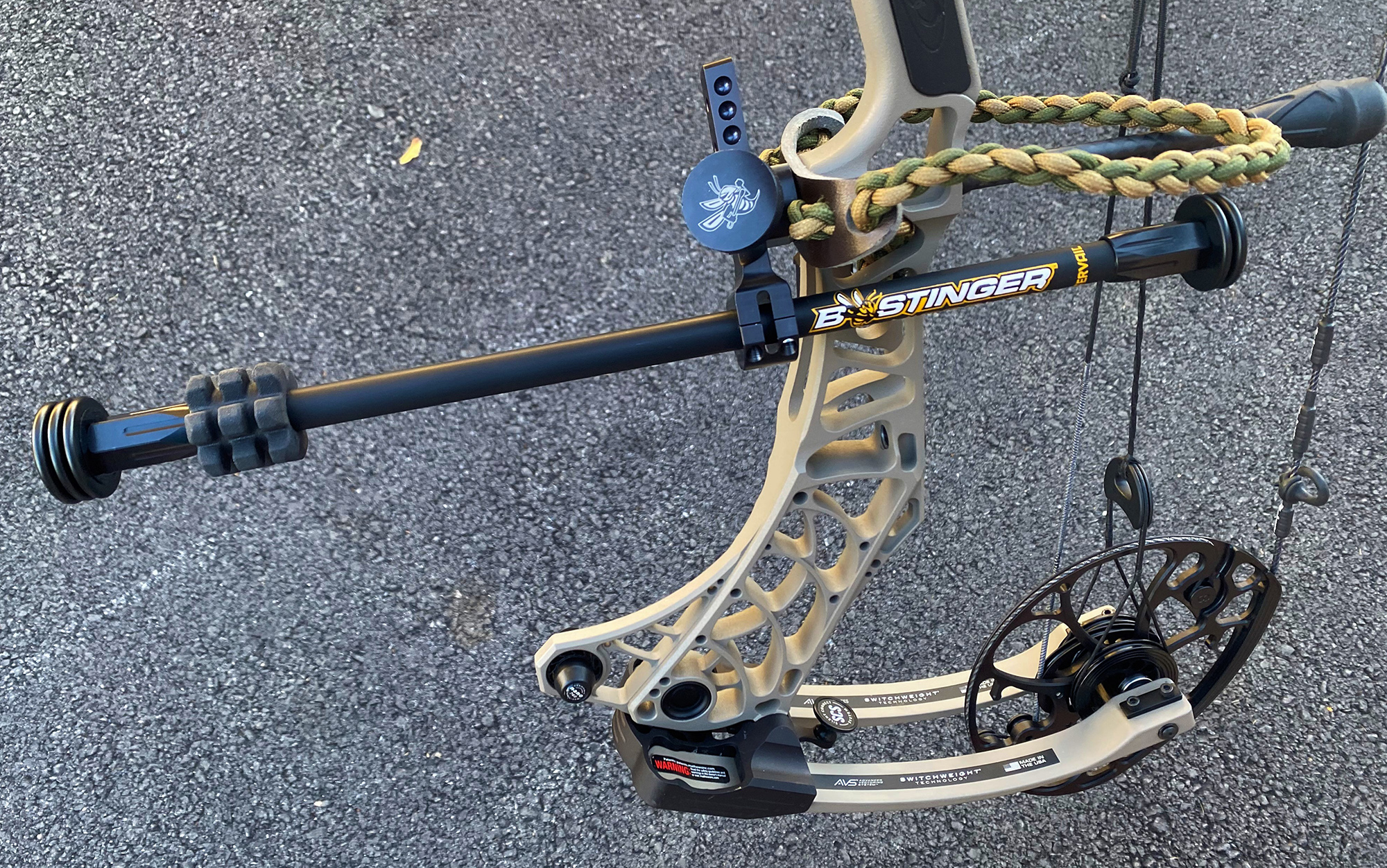Fine-Tune Your Aim: The Science Behind Compound Bow Stabilizers
Fine-Tune Your Aim: The Science Behind Compound Bow Stabilizers
Blog Article
Optimizing Your Archery Efficiency With the Right Substance Bow Stabilizer: a Thorough Review
In the realm of archery, consistency and accuracy are extremely important to attaining optimum performance. One essential yet often-overlooked part in improving accuracy is the compound bow stabilizer. This plain gadget plays a significant role in steadying your purpose, lowering bow torque, and soaking up resonances. Nevertheless, the efficiency of a stabilizer depends upon various variables, consisting of positioning, weight, and design. By comprehending the nuances of selecting and optimizing a substance bow stabilizer, archers can fine-tune their tools to elevate their capturing experience to new degrees of proficiency and control.
Significance of Bow Stabilizers in Archery

In addition, bow stabilizers assist in stabilizing the weight circulation of the bow, which can improve the archer's stability while aiming and shooting. By adding weight to the front of the bow, stabilizers can lower the amount of torque experienced upon launch, resulting in a smoother and extra controlled shot - compound bow stabilizer. This weight distribution additionally helps in holding the bow constant for a longer period, enabling the archer to intend more precisely
Kinds Of Compound Bow Stabilizers
When considering the different kinds of compound bow stabilizers offered, it is vital to comprehend their distinctive functions and functions to determine the most ideal alternative for taking full advantage of archery performance. The most typical types of substance bow stabilizers consist of sidebar stabilizers, front stabilizers, and back stabilizers. Back stabilizers, additionally called back stabilizers, are installed to the back of the bow and assist in counteracting the weight of various other devices, resulting in boosted security and stable intending.
Variables to Take Into Consideration When Picking
In evaluating substance bow stabilizers, recognizing the distinctive functions and features of each type is critical for making a notified choice on one of the most suitable choice to boost archery performance. When choosing a stabilizer, one have to consider the weight of the stabilizer itself. While a much heavier stabilizer can give more stability by lowering the bow's motion, it might additionally cause tiredness during lengthy shooting sessions. Equilibrium is another essential element to consider. The stabilizer's length and design dramatically impact the bow's balance, impacting the shooter's ability to hold consistent purpose. Additionally, the material of the stabilizer can influence its performance. Carbon fiber stabilizers are lightweight and take in resonances well, boosting precision. In addition, the number More hints and adjustability of dampeners on the stabilizer can fine-tune its performance by reducing noise and shock upon launch. By thoroughly reviewing these variables, archers can pick a compound bow stabilizer that aligns with their shooting style and maximizes their overall performance on the archery range.
Installment and Modification Tips
For optimum efficiency and precision in archery, mastering the installation and change of your bow stabilizer is necessary. Correct installment begins with attaching the stabilizer to the bow's riser, guaranteeing it is firmly safeguarded.
When adjusting the stabilizer, begin with little step-by-step modifications instead than extreme adjustments. Pay focus to just how the bow reacts to modifications in stabilizer setups and make changes accordingly. Regularly inspect the stabilizer's tightness and general problem to guarantee it continues to work efficiently.
Upkeep and Treatment Standards

It is likewise important to store your bow with the stabilizer in visit here a protected and safe area when not in use. Adhering to these upkeep and treatment guidelines will certainly help important source you obtain the most out of your bow stabilizer and enhance your overall archery efficiency.
Final Thought
To conclude, picking the best substance bow stabilizer is important for maximizing archery efficiency. Understanding the relevance, types, aspects to take into consideration, installment and adjustment ideas, as well as upkeep and treatment standards can greatly affect one's precision and consistency in shooting. By picking a stabilizer that suits specific requirements and choices, archers can enhance their general efficiency and attain better outcomes on the array or in competition.
Bow stabilizers play a vital role in improving an archer's accuracy and uniformity by lowering vibrations and supporting the bow throughout the launch of an arrow - compound bow stabilizer.In addition, bow stabilizers help in balancing the weight distribution of the bow, which can enhance the archer's security while intending and shooting. The most usual kinds of compound bow stabilizers include sidebar stabilizers, front stabilizers, and back stabilizers. Back stabilizers, likewise called back stabilizers, are placed to the back of the bow and aid in counterbalancing the weight of other accessories, resulting in enhanced security and consistent aiming. When choosing a stabilizer, one have to consider the weight of the stabilizer itself
Report this page